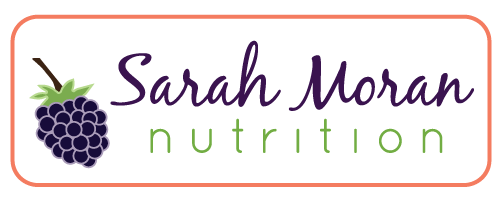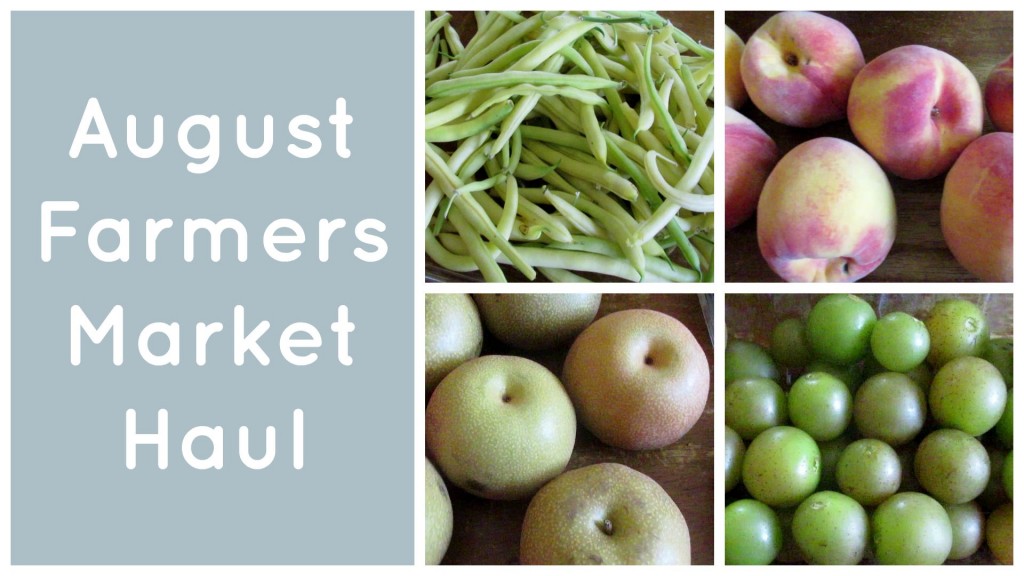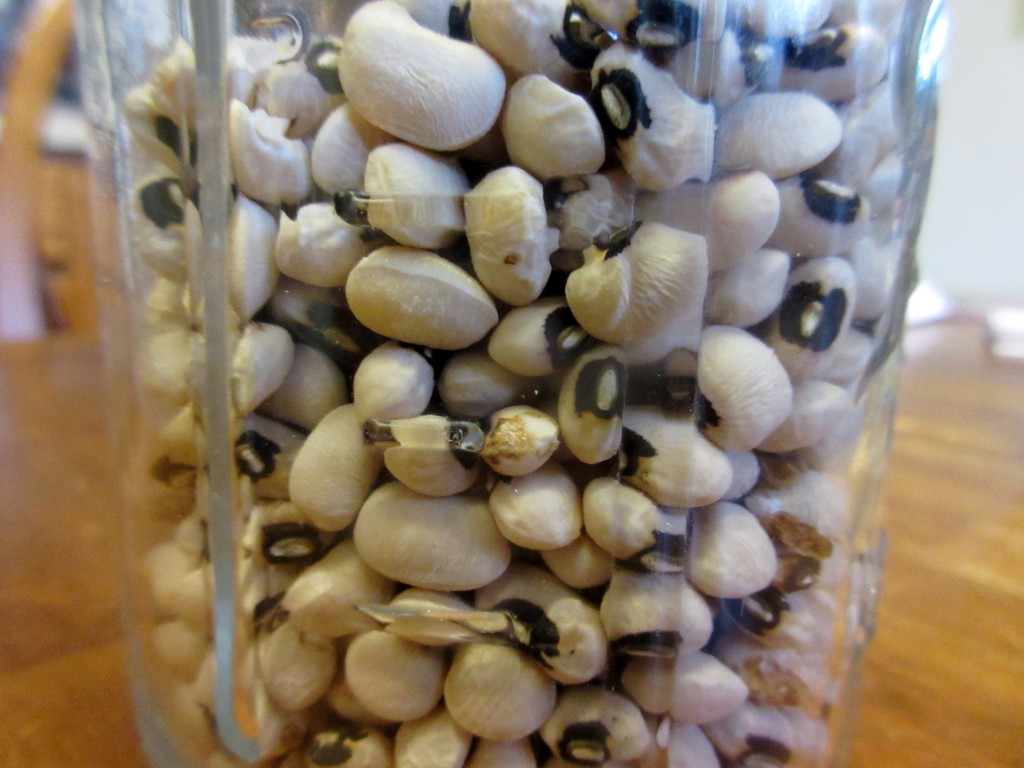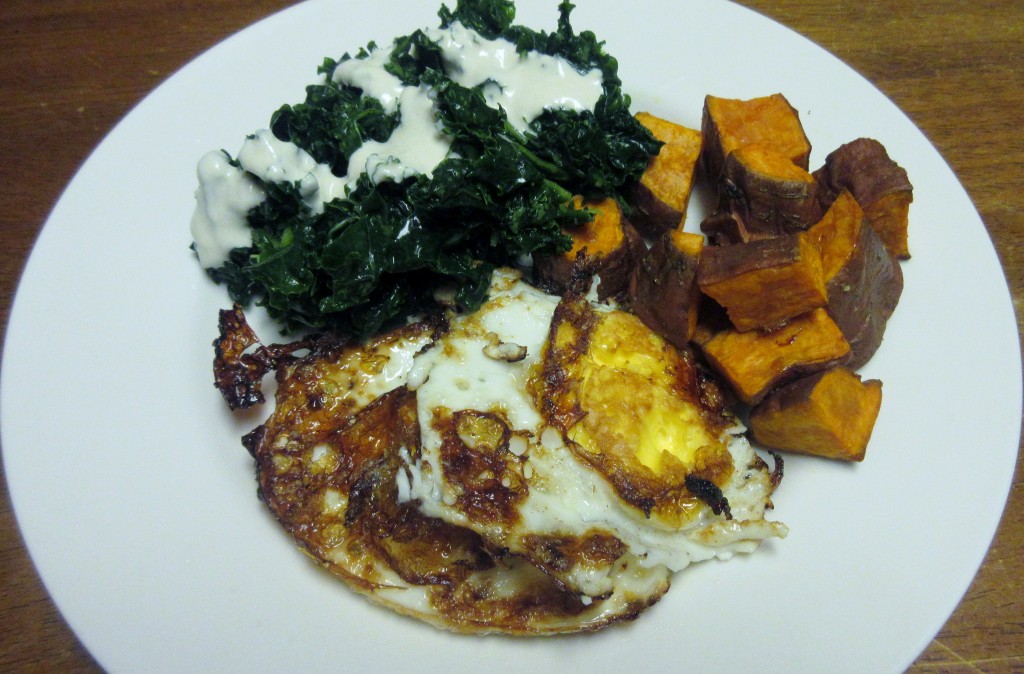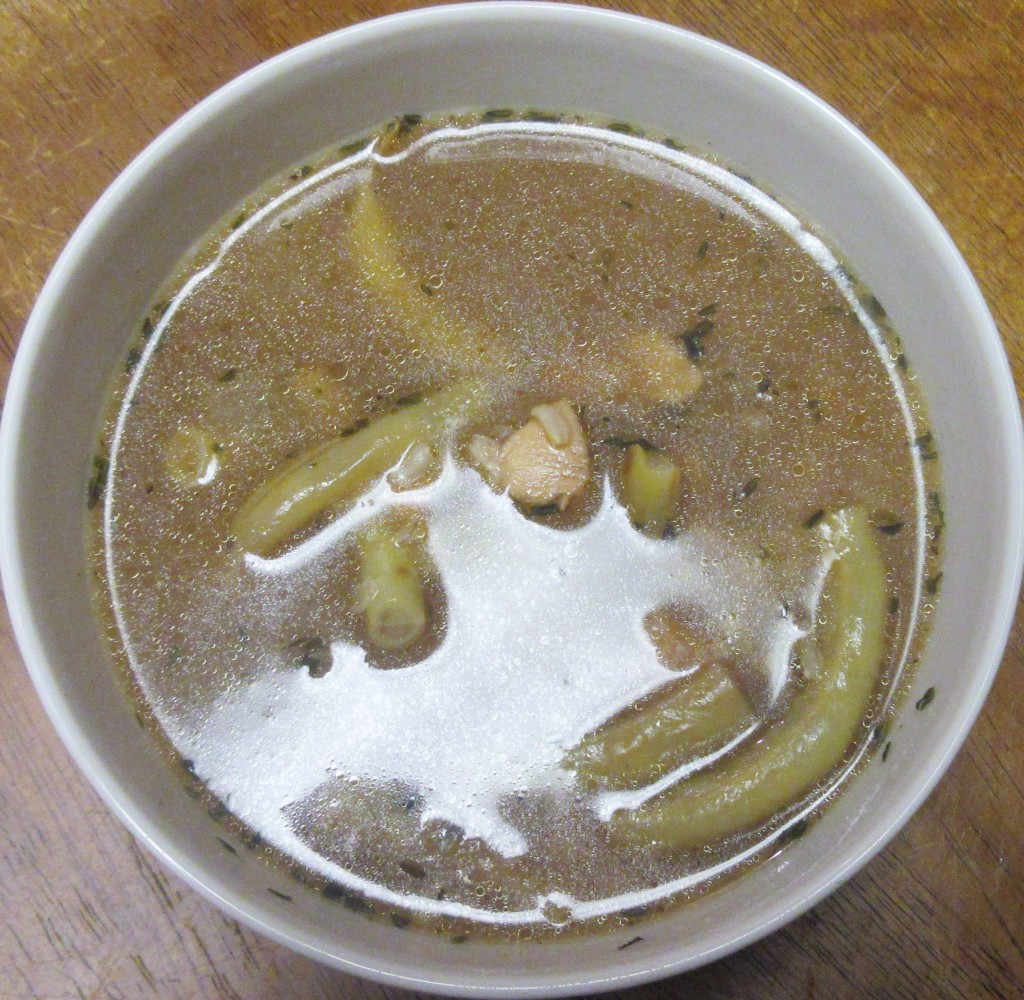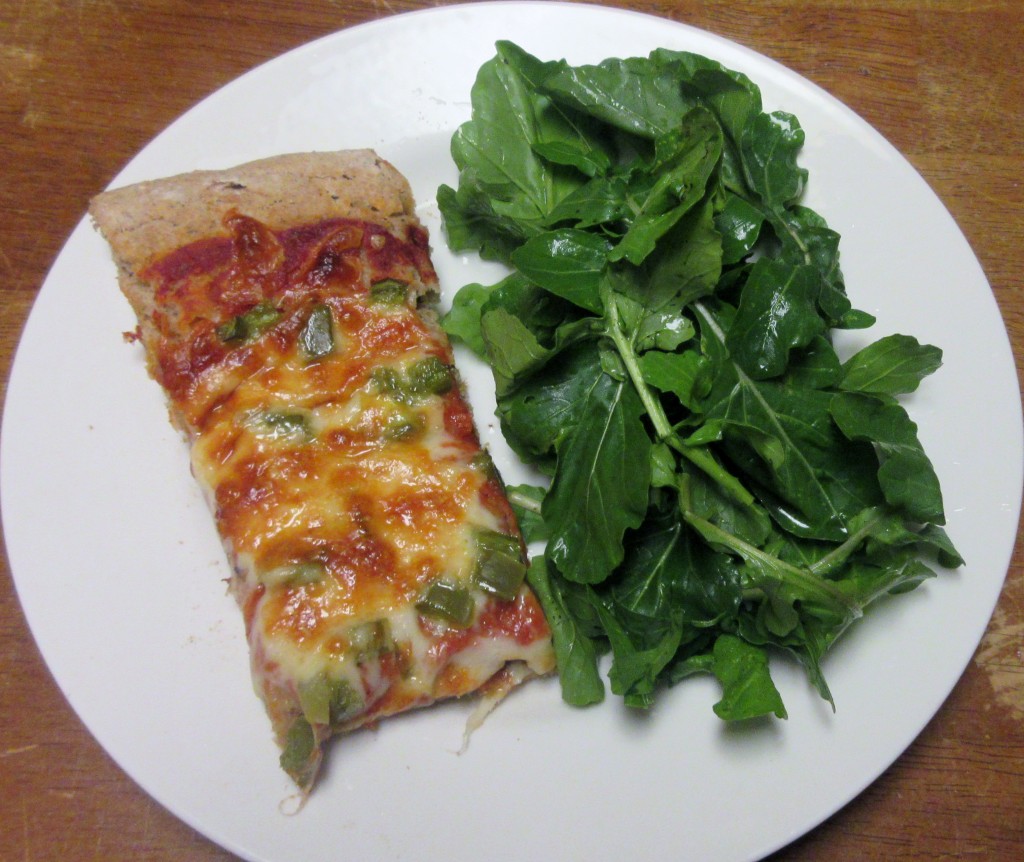Spring Farmers Market Haul
/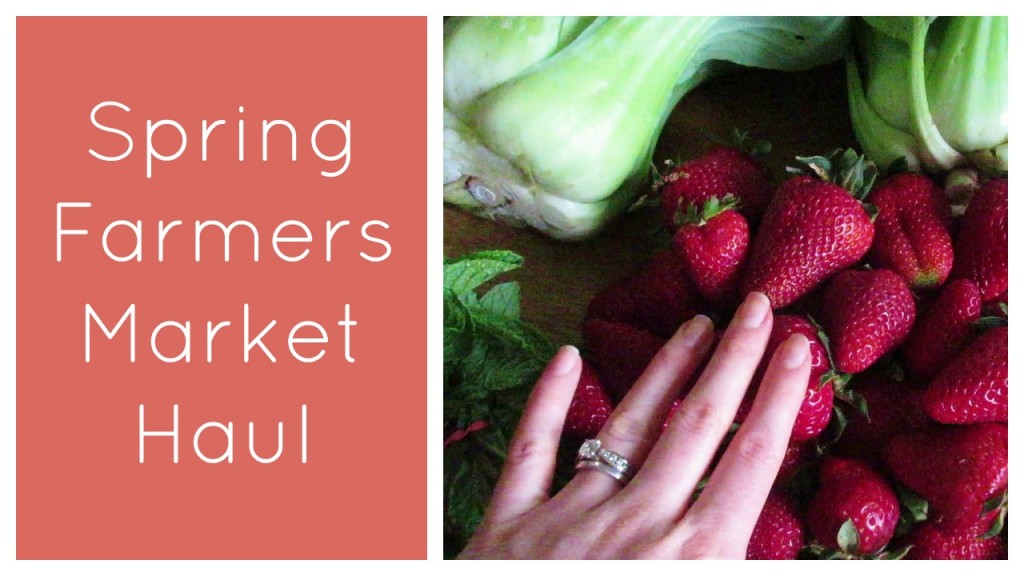 Here's everything I got at my local farmers market in early May in Virginia! Spring is one of my favorite times of the year because of all of the fresh, crisp produce we get after a long, cold winter. We've got so many delicious spring fruits and veggies right now and I'm loving it!
Here's everything I got at my local farmers market in early May in Virginia! Spring is one of my favorite times of the year because of all of the fresh, crisp produce we get after a long, cold winter. We've got so many delicious spring fruits and veggies right now and I'm loving it!
[x_video type="16:9, 5:3, 5:4, 4:3, 3:2" m4v="" ogv="" poster="" hide_controls="" autoplay="" embed='' no_container="true"]
7 Tips for Farmers' Market Newbies
/ Going to your local farmers' market is a great way to get healthy food and support your local community, but, if you've never been before, it can be a little intimidating. Here are a few simple tips to make your first farmers' market experience a great one!
Going to your local farmers' market is a great way to get healthy food and support your local community, but, if you've never been before, it can be a little intimidating. Here are a few simple tips to make your first farmers' market experience a great one!
[x_video type="16:9, 5:3, 5:4, 4:3, 3:2" m4v="" ogv="" poster="" hide_controls="" autoplay="" embed='' no_container="true"]
How to Find Local Food
/Local food is often more nutritious and offers more variety. Plus, you can talk directly to the producer and support your community. Finding that local food, however, can be difficult. Here are my top tips and resources for finding farmers' markets, CSAs, farms, and other local food resources in your area. [x_video type="16:9, 5:3, 5:4, 4:3, 3:2" m4v="" ogv="" poster="" hide_controls="" autoplay="" embed='' no_container="true"]Local Harvest
Fall CSA Week 7
/Here's everything I got in my box! Items are listed below, starting at the top and moving left to right.
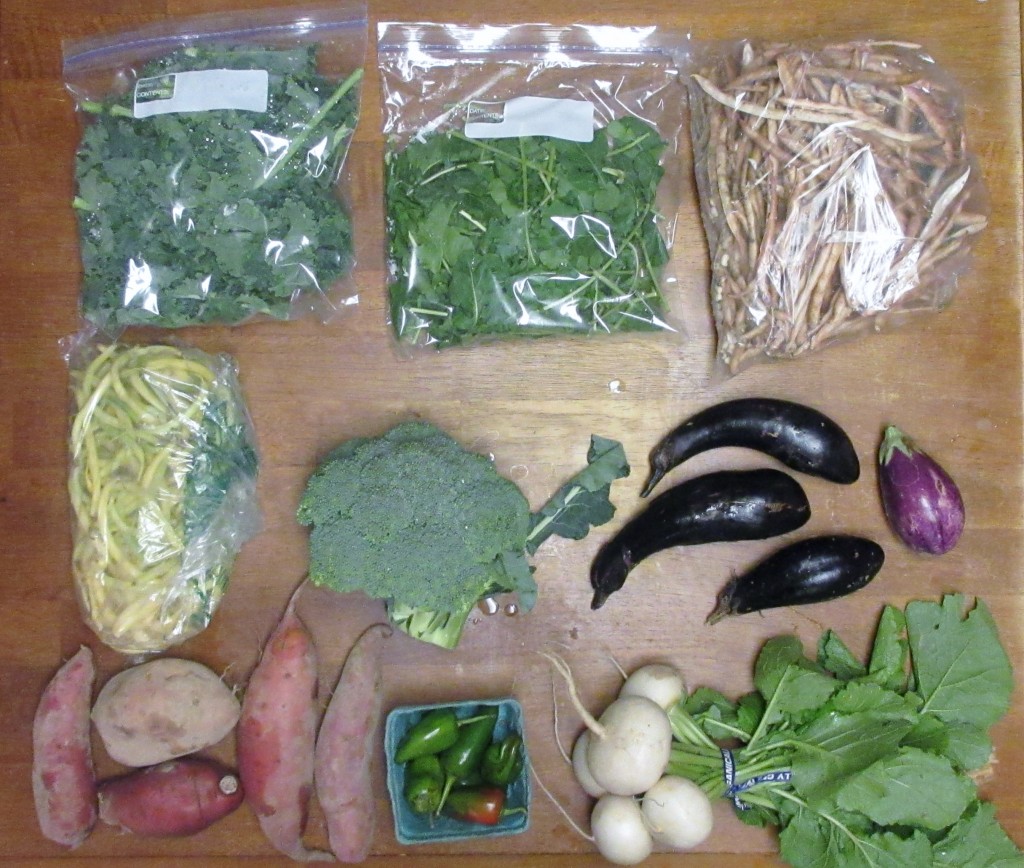
- Kale
- Arugula
- Dried black eyed peas
- Yellow roc d'or beans
- Broccoli
- Eggplant
- Sweet potatoes
- Jalapenos
- Turnips
I reserved the peppers for homemade hot sauce and shelled the black eyed peas to save for later.
I used the kale to make a salad with tahini dressing and roasted some of the sweet potatoes. With a fried egg, it was perfect.
Ok, this picture didn't turn out the best. I guess I need to work on my soup photography skills. The roc d'or beans, homemade chicken stock, and some leftover chicken all went into the pot, along with some onion and garlic. Yum!
Pizza night should look familiar if you've been checking back each week for these posts. This week, the salad was arugula with a homemade vinaigrette.
Lots of the veggies went into this meal. I roasted the eggplant, turnips, and broccoli and sauteed the turnip greens. We had fried eggs again, which some people might not like, but I love eggs so I'm fine with it. :D
4 Must-Dos Before the Farmers Market Opens!
/Spring is finally here and that means that farmers markets across the country are getting ready to open for the new season. In this video, I share my top 4 must-dos before your local farmers market opens, so you can be ready for all of those fresh fruits and veggies! [x_video type="16:9, 5:3, 5:4, 4:3, 3:2" m4v="" ogv="" poster="" hide_controls="" autoplay="" embed='' no_container="true"]
Which foods are you most looking forward to getting your hands on this season? Are you a tomato fanatic like me? Share in the comments below!
October Farmers Market Haul
/[youtube=http://youtu.be/nBqifPiSTug] What did you get at the farmers market this week? Share in the comments below!
NNMC Increase Produce: Visit the Farmers Market
/ Frequenting your local farmers market is an excellent way to become more involved in your community. It also gives you access to locally grown, seasonal produce and the ability to talk directly with the farmer who grew it. Eating food that is in season and hasn't traveled thousands of miles to your plate means that the product quality is superb. The flavor of these foods is so much better than anything else you could buy. When I hear that people don't like a particular fruit or vegetable, I often wonder if the real issue is that they haven't had it at the peak of freshness. You may find that you enjoy something that you previously thought you didn't like at all. Another plus is that you'll be able to purchase produce that you can't find at the grocery store. From heirloom varieties of the classics you already know to vegetables you may have never heard of, the options will amaze you. Having this kind of variety in your diet will help to ensure you're getting all the nutrients you need, keep you from getting bored with your meals, and allow you to discover your knew favorites. To find a market in your area, check out Local Harvest or the USDA National Farmers Market Directory. Happy shopping!
Frequenting your local farmers market is an excellent way to become more involved in your community. It also gives you access to locally grown, seasonal produce and the ability to talk directly with the farmer who grew it. Eating food that is in season and hasn't traveled thousands of miles to your plate means that the product quality is superb. The flavor of these foods is so much better than anything else you could buy. When I hear that people don't like a particular fruit or vegetable, I often wonder if the real issue is that they haven't had it at the peak of freshness. You may find that you enjoy something that you previously thought you didn't like at all. Another plus is that you'll be able to purchase produce that you can't find at the grocery store. From heirloom varieties of the classics you already know to vegetables you may have never heard of, the options will amaze you. Having this kind of variety in your diet will help to ensure you're getting all the nutrients you need, keep you from getting bored with your meals, and allow you to discover your knew favorites. To find a market in your area, check out Local Harvest or the USDA National Farmers Market Directory. Happy shopping!
GMOs Part 2: Where They Are and How to Choose Foods Without Them
/After digesting (har-har) some of the information in my previous post, you may want to know more about where GMOs lurk in our food supply and how to avoid them. At this stage of the game, GMOs are not labeled, so you're going to have to play detective a little bit. However, once you know the tricks, choosing GMO free food will be second nature. Here are some tips to remember when you're strolling down the grocery store aisle.

1. Know the foods that are commonly GMO.
Topping the list are corn and soy which are predominantly GMO and used in just about every processed food you can find. High-fructose corn syrup anyone? Also, many of those odd food additives that you're just not sure what they are or can't even pronounce are made from GMO corn or soy too. Canola oil and sugar beets are common culprits as well.
In the produce section, Hawaiian papaya, corn on the cob, zucchini, and yellow summer squash may be GMO as well. Unless they are marked as organic or non-GMO, you simply can't tell.
2. Choose Organic.
As a part of organic certification, foods labeled as organic cannot intentionally contain GMO ingredients. While this doesn't protect you 100% due to issues such as cross-pollination with neighboring GMO crops, it's one of the best ways to protect yourself. Also, never forget that organic does not equal healthy or exempt you from digging a little deeper and reading the ingredients list. As I stated in a previous label reading post, a product labeled as organic must have at least 95% organic ingredients, so there still could still be a few less that ideal ingredients in the product. Plus, organic or not, any food that contains refined grains or excessive amounts of sugar is definitely not a health food in my book.
3. Look for the Non-GMO Project label.
Non-GMO Project is an independent, third-party organization who, according to their website, verifies that "a product has been produced according to rigorous best practices for GMO avoidance, including testing of risk ingredients." What this means, is that they can't verify that every product is 100% GMO free because they don't test end products. However, this label is the most rigorous standard and your best bet to finding food without GMOs. For more information on this label, click the picture to the right to link to their website.
4. Know your farmer. Know your food.
The best way to know what's in your food and where it comes from is to step out of the grocery store, head to your local farmer's market or roadside stand, and get to know the people who grow your food. Ask them about their philosophy and growing practices and find out what's important to them. Even better, visit their farm and get a first-hand look at how they do things. Not only will you be supporting farmers in your area, but you'll help to build a sense of community that is invaluable.
Final thought:
If avoiding GMOs is important to you, it's definitely possible. However, I still feel that labeling is essential. Whether you're for or against GMOs, every consumer has a right to know what is in the food they are purchasing. That information shouldn't be shrouded in a veil of mystery or hidden to prevent a dip in sales.
